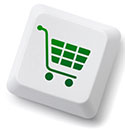By Rachel Miller
 It’s an exciting time to be an online retailer, especially because new third-party marketplaces are cropping up regularly in the evolving e-commerce landscape. The global success of Amazon and eBay has led to an explosion of marketplaces from newer players that provide retailers with opportunities to grow their online sales, both domestically and internationally. While the addition of marketplaces provides more revenue opportunities, it can be a challenge for retailers to determine which options make the most sense for their products. Here’s a look at three U.S. and three international options, to help find success on marketplaces beyond Amazon and eBay.
It’s an exciting time to be an online retailer, especially because new third-party marketplaces are cropping up regularly in the evolving e-commerce landscape. The global success of Amazon and eBay has led to an explosion of marketplaces from newer players that provide retailers with opportunities to grow their online sales, both domestically and internationally. While the addition of marketplaces provides more revenue opportunities, it can be a challenge for retailers to determine which options make the most sense for their products. Here’s a look at three U.S. and three international options, to help find success on marketplaces beyond Amazon and eBay.
Emerging U.S. Marketplaces
Best Buy
Best Buy launched its online marketplace in 2011, and allows select third-party retailers to sell on its website. The shopping experience on the marketplace is similar to browsing the aisles at one of the company’s big box stores, as many of the same merchants sell the same name-brand technology online. Retailers are required to handle all product fulfillments themselves. Best Buy puts a major focus on customer incentives, with offerings such as the Best Buy Deal of the Day, and a Reward Zone loyalty program for frequent shoppers.
Newegg
The Newegg marketplace started in 2011 to meet the growing customer demand for a wider variety of products other than consumer electronics and IT products on Newegg.com. The Newegg marketplace allows retailers to sell and showcase their products on Newegg.com in the same way as Newegg’s own products, resulting in an integrated shopping experience. Newegg now offers more than 10.5 million products, and the marketplace’s catalog now includes office supplies, sporting goods, automotive and industrial products, and more. Newegg expects sellers to ship within 48 hours, and orders that are not shipped after 72 hours will be cancelled, with the buyer’s money refunded.
Sears
Sears is the third largest mass-merchant retailer in the U.S. Launched in 2009, the Sears marketplace is an innovative community that allows retailers to sell products on the Sears Holdings Corporation family of websites. Sears offers compelling options for online retailers, including Sell on Sears, Sell Through Sears and Advertise on Sears. Top categories available to third-party merchants include electronics, home goods, outdoor living, lawn and garden, tools, movies and gaming, fitness and sports, jewelry and toys. Compared to other marketplaces, Sears has a relatively long lead-time to get items listed on its site.
Emerging Marketplaces Around the World
MercadoLibre
Founded in 1999, MercadoLibre operates in 13 countries, making it part of the largest e-commerce ecosystem in Latin America. The marketplace provides retailers with the opportunity to sell in countries such as Mexico and Argentina, without building separate localized websites for each. MercadoLibre started as an auction site, with customers often buying used items. Today, 95 percent of MercadoLibre transactions are fixed price, and 80 percent of the products sold are new. In a region with a large population and a growing internet penetration rate, MercadoLibre provides a lot of potential for retailers that want to sell abroad.
Rakuten’s Play.com
Founded in 1998, Play.com was sold to global giant Rakuten in September 2011. Historically, the site sold gaming and media products, but Rakuten’s Play.com now has many sellers across a variety of categories. In a short time, Play.com has become the third largest online marketplace in the U.K. On Play.com, all retailers have the ability to promote their brand on the site’s storefront, making it an appealing channel for retailers of all sizes. One of the major advantages of selling through Play.com is the lack of listing fees; retailers pay only a sales commission. However, the marketplace does require that retailers offer free shipping to anywhere in the U.K., as well as to ship products within two days.
Trade Me
Trade Me, established in 1999, is a marketplace giant in New Zealand. Trade Me started with humble beginnings: a platform for secondhand goods sold in auction format, similar to eBay. Now offering new products from retailers at fixed prices, the marketplace has grown into one of New Zealand’s most visited websites. Trade Me is home to 70 percent of the country’s domestic webpage impressions, and has built a reputation as a secure environment for online trading. Product categories include baby gear, books, clothing, computers and home and living.
These are just a few marketplaces that could contribute to your e-commerce growth. It’s a big world out there, full of new opportunities. To identify which emerging marketplaces provide the most potential, retailers must fully understand each marketplace’s audience and selling requirements. To learn more about selling on marketplaces, download the eBook, “A Retailer’s Guide to Selling on Marketplaces,” by visiting http://bit.ly/SellingOnMarketplaces.
